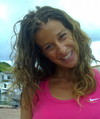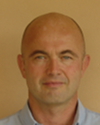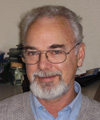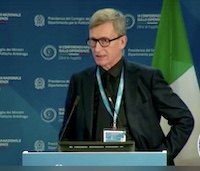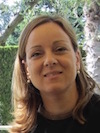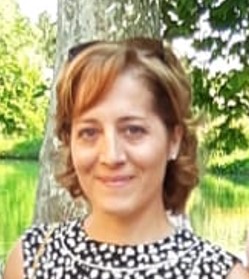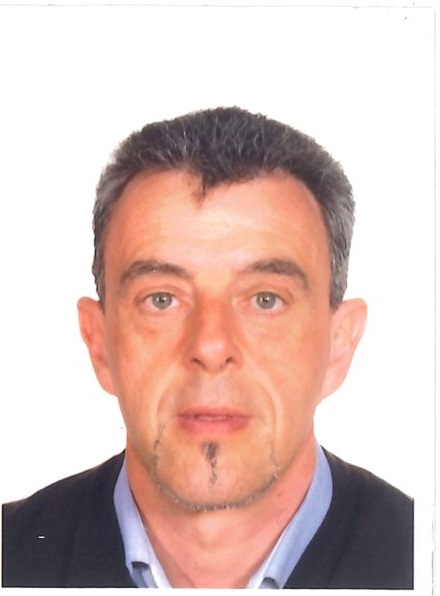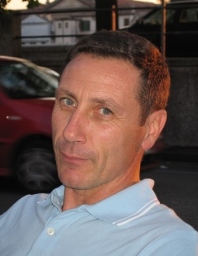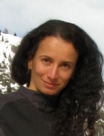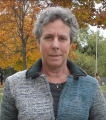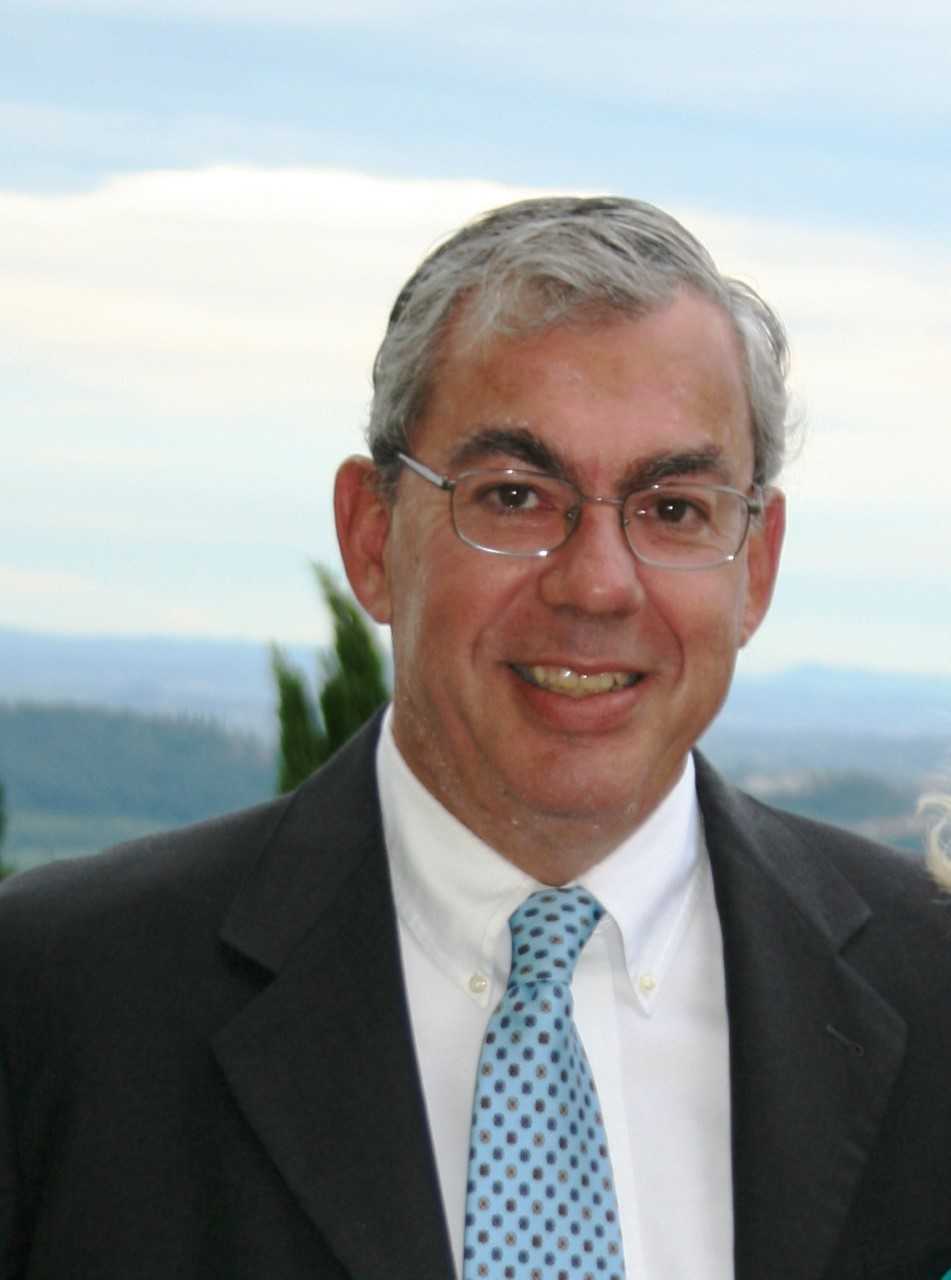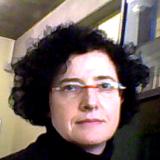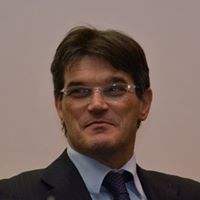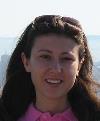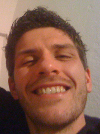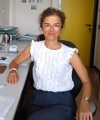Studying at the University of Verona
Here you can find information on the organisational aspects of the Programme, lecture timetables, learning activities and useful contact details for your time at the University, from enrolment to graduation.
Academic calendar
The academic calendar shows the deadlines and scheduled events that are relevant to students, teaching and technical-administrative staff of the University. Public holidays and University closures are also indicated. The academic year normally begins on 1 October each year and ends on 30 September of the following year.
Course calendar
The Academic Calendar sets out the degree programme lecture and exam timetables, as well as the relevant university closure dates..
| Period | From | To |
|---|---|---|
| I semestre | Oct 1, 2014 | Jan 30, 2015 |
| II semestre | Mar 2, 2015 | Jun 5, 2015 |
| Session | From | To |
|---|---|---|
| Sessione invernale | Feb 2, 2015 | Feb 27, 2015 |
| Sessione estiva | Jun 8, 2015 | Jul 10, 2015 |
| Sessione autunnale | Aug 24, 2015 | Sep 25, 2015 |
| Sessione straordinaria | Jan 25, 2016 | Feb 26, 2015 |
| Session | From | To |
|---|---|---|
| Sessione invernale | Mar 20, 2015 | Apr 10, 2015 |
| Sessione estiva | Jul 13, 2015 | Jul 31, 2015 |
| Sessione autunnale | Oct 15, 2015 | Nov 3, 2015 |
| Sessione straordinaria | Mar 21, 2016 | Apr 11, 2016 |
| Period | From | To |
|---|---|---|
| Vacanze di Natale | Dec 22, 2014 | Jan 6, 2015 |
| Vacanze di Pasqua | Apr 2, 2015 | Apr 7, 2015 |
| Ricorrenza del Santo Patrono | May 21, 2015 | May 21, 2015 |
| Vacanze estive | Aug 10, 2015 | Aug 16, 2015 |
Exam calendar
Exam dates and rounds are managed by the relevant Exercise Science Teaching and Student Services Unit.
To view all the exam sessions available, please use the Exam dashboard on ESSE3.
If you forgot your login details or have problems logging in, please contact the relevant IT HelpDesk, or check the login details recovery web page.
Should you have any doubts or questions, please check the Enrollment FAQs
Academic staff
Agosti Alberto
 alberto.agosti@univr.it
alberto.agosti@univr.it
 +39 045802 8774
+39 045802 8774
 valentina.biino@univr.it
valentina.biino@univr.it
 paola.cesari@univr.it
paola.cesari@univr.it
 vdurigon@katamail.com
vdurigon@katamail.com
 lonardifabiola@gmail.com
lonardifabiola@gmail.com
 dino.mascalzoni@univr.it
dino.mascalzoni@univr.it
 alberto.nuvolari@gmail.com
alberto.nuvolari@gmail.com
 laura.selmo@univr.it
laura.selmo@univr.it
 francescouguagliati@alice.it
francescouguagliati@alice.it
Study Plan
The Study Plan includes all modules, teaching and learning activities that each student will need to undertake during their time at the University.
Please select your Study Plan based on your enrollment year.
1° Year
| Modules | Credits | TAF | SSD |
|---|
2° Year activated in the A.Y. 2015/2016
| Modules | Credits | TAF | SSD |
|---|
3° Year activated in the A.Y. 2016/2017
| Modules | Credits | TAF | SSD |
|---|
| Modules | Credits | TAF | SSD |
|---|
| Modules | Credits | TAF | SSD |
|---|
| Modules | Credits | TAF | SSD |
|---|
| Modules | Credits | TAF | SSD |
|---|
Legend | Type of training activity (TTA)
TAF (Type of Educational Activity) All courses and activities are classified into different types of educational activities, indicated by a letter.
Biology (2014/2015)
Teaching code
4S00303
Academic staff
Coordinator
Credits
6
Language
Italian
Scientific Disciplinary Sector (SSD)
BIO/13 - EXPERIMENTAL BIOLOGY
Period
I semestre dal Oct 1, 2014 al Jan 30, 2015.
Learning outcomes
• educate the student to the "critical method" and the discussion by the description of the experiments that are the heritage of the history of biology as well as the culture of all time;
• provide an overview and updated themes and biological issues that are relevant in the profession of sports experts;
• familiarize the student with the modern techniques of biological research that can be used in studies by physical activity and sport.
Program
At the end of the course the student will learn about the following topics:
1. The characteristics common to all living organisms
2. The observations and experiments that led to the discovery of the genetic material: Griffith’s experiments and experiments by Avery, McLeod and McCarty on the identification of DNA; the central dogma of Biology, for which DNA derived from the RNA and protein by RNA; observations of A. Garrod, alkaptonuria and homogentisic oxidase; the discovery of the structure of DNA by Erwin Chargaff , Rosalind Franklin, J. Watson and F. Crick and finally to Meselson and Stahl (the semiconservative replication).
3 . The morphological and functional differences between viruses, bacteria and eukaryotes including protists.
4. The biology of the cell: the organization of the eukaryotic cell, the nuclear and cytoplasmic compartments. Microscopy and analytical techniques applied to the cell studies.
4.1 Cell membranes: the bilayer of phospholipids, cholesterol and membrane proteins, the relationship between the antigens on the erythrocyte membrane and blood groups. The transport mechanisms
4.2 The functions of the cell organelles.
4.3 The cell aggregates and the extracellular matrix
4.4 The morphology and function of the epithelial cells
4.5 The morphology of the muscle cell and the nerve cell, the neuromuscular junction and neurotransmitters, synapses, and its organization and the enzymes involved. Depolarization of the membrane, the chain of events that leads to the transmission of the signal from synapse to synapse through the axon, Schwann cells and oligodendrocytes; the action potential and muscle contraction. The muscle cell, molecules, enzymes and proteins involved in contraction of the muscle fiber. The muscle fiber types and their characteristics, the growth of muscle mass related to training, the function of satellite cells, the function of myostatin and its inhibitors.
4.6 The cells of the connective tissue: diversity and functions
5. The cell reproduction: the cell cycle and the mechanisms that govern cell division (mitosis) and both male and female gametogenesis (meiosis). The stem cells ,
6. The flow of gene expression: transcription and translation. The eukaryotic chromosome and gene regulation and expression. Chromatin and chromosomes. The human karyotype. Interpreting the switching on or off of the gene activity in response to an environmental stimulus; interpret the phenomena of differentiation and cell growth through mechanisms such as autocrine, paracrine and endocrine systems. Genetic mutations. The difference between gene mutations and chromosomal abnormalities, spontaneous mutations, mutagens and their action, the test of "fluctuation", the Ames’s test, the correlation between mutagenesis and cancer, the relationship between smoking and cancer, damage to UV and repair mechanisms, the Xerodema Pigmentosum.
7. Inheritance of characters: the principles of mendelian genetics, the allels and the concepts of dominance and recessiveness.
8. Human genetics: interpreting and building family trees, with particular reference to characters such as the blood groups and some of the known genes in human genetic diseases (eg, familial hypercholesterolemia, cystic fibrosis, hemophilia, etc..)
9. The principles of population genetics population and the Hardy and Weinberg low.
10. The developmental biology: embrional layers and their fate. The mechanisms involved in the aging; genetics and environmental factors; the Hayflick's experiments; the role of free radicals, antioxidants;, the shortening of telomeres;the genetic programs that determine the average life span of a species.
| Author | Title | Publishing house | Year | ISBN | Notes |
|---|---|---|---|---|---|
| Campbell NA, Reece JB | Biologia (unità 1, 2, 3) . | Bolognal, Zanichelli | 2004 |
Examination Methods
A written examination with open questions and multiple choice quizzes.
Teaching materials e documents
-
 Programma A.A. 14-15 ENG
(pdf, it, 531 KB, 31/10/14)
Programma A.A. 14-15 ENG
(pdf, it, 531 KB, 31/10/14)
-
 Programma A.A. 14-15 ITA
(pdf, it, 646 KB, 31/10/14)
Programma A.A. 14-15 ITA
(pdf, it, 646 KB, 31/10/14)
Type D and Type F activities
Modules not yet included
Career prospects
Module/Programme news
News for students
There you will find information, resources and services useful during your time at the University (Student’s exam record, your study plan on ESSE3, Distance Learning courses, university email account, office forms, administrative procedures, etc.). You can log into MyUnivr with your GIA login details: only in this way will you be able to receive notification of all the notices from your teachers and your secretariat via email and soon also via the Univr app.
Graduation
List of theses and work experience proposals
| theses proposals | Research area |
|---|---|
| ANTROPOMETRIA E COMPOSIZIONE CORPOREA NEL CALCIO | Various topics |
| ANTROPOMETRIA TRIDIMENSIONALE - ESEMPI APPLICATIVI | Various topics |
| Controllo posturale e locomozione in età evolutiva | Various topics |
| EFFETTO DELLA VIBRAZIONE CORPOREA TOTALE SU PEDANA | Various topics |
| Feedback Aumentativo e Apprendimento Motorio | Various topics |
| Il ruolo della fatica cognitiva nella prestazione motoria e nella percezione corporea: teorie di riferimento e strumenti di indagine | Various topics |
Gestione carriere
Student mentoring
Orario lezioni
L’orario delle lezioni comprende
Lezioni Frontali in aula
Esercitazioni e laboratori
Questi ultimi sono organizzati per gruppi dai singoli docenti responsabili dei corsi.
L'orario è pubblicato nel portale studenti
Modalità di frequenza
Vige l'obbligo di frequenza al 70% come specificato nel Regolamento di ogni singolo corso di laurea e laurea magistrale:
Ulteriori informazioni:
L'accesso alle pagine Moodle dei singoli insegnamenti è vincolato alla compilazione del piano di studi.
App Univr Lezioni, FAQ e guida all'utilizzo sono disponibili al seguente link: orario-lezioni-e-modalita-di-frequenza
Comunicati: Avvisi per studenti
Internships
Internships are aimed at enabling students to gain direct knowledge of the world of work and to acquire specific professional skills.
Internships are carried out under the responsibility of an individual lecturer, and can be carried out in professional firms, public administration bodies and companies recognised by the University of Verona.
Any CFU credits gained by doing internships will be recognised and recorded by the University in accordance with the relevant University regulations in force (Regolamento d’Ateneo per il riconoscimento dei crediti maturati negli stage universitari).
For further information on internships, please go to: https://www.univr.it/it/i-nostri-servizi/stage-e-tirocini.
Student login and resources
Recupero Obblighi Formativi - OFA
I corsi di supporto per il recupero degli Obblighi Formativi aggiuntivi - OFA di Chimica, Fisica, Matematica - sono organizzati annualmente e sono segnalati direttamente nell'orario delle lezioni del 1° anno ► vedi pagina.
Al termine di ciascun corso frequentato gli studenti dovranno sostenere e superare una prova scritta per colmare il debito entro il 15 dicembre dell'anno successivo, per potersi iscrivere al 2° anno.
►Date e orari degli appelli sono indicati nel Calendario Didattico - Calendario Esami.
In caso di mancato superamento degli obblighi formativi entro il 15/12, lo studente resterà iscritto al 1° anno anche per l'anno successivo come ripetente, dovrà sostenere la verifica di recupero in un altro appello e NON non potrà frequentare o sostenere gli esami del 2° anno.
Certificazione medica di idoneità
Riferimenti normativi principali: DM 24 aprile 2013 art. 3, GU 169 del 20-07-2013; Decreto del Ministro della Salute dell’8 agosto 2014 e s.m.i.
Per frequentare le attività dei corsi di Laurea e Laurea magistrale di Scienze motorie è obbligatorio presentare la certificazione medica di idoneità fisica per attività sportiva non agonistica. La certificazione è necessaria per accedere alle attività pratiche-esercitative e al tirocinio.
à COME OTTENERE LA CERTIFICAZIONE
La certificazione - riportante l’indicazione che è stato eseguito l’ECG a riposo - può essere rilasciata da:
- centri o servizi di medicina dello sport delle ASL (ora ATS) e delle aziende ospedaliere
- istituti della Federazione Medico Sportiva Italiana
- centri pubblici o privati autorizzati:
- dai medici di medicina generale di libera scelta, relativamente ai propri assistiti;
- dal medico specialista in medicina dello sport.
L’ECG a riposo deve essere ripetuto annualmente.
E’ ammesso anche il certificato medico di idoneità alla pratica sportiva agonistica, per chi ne fosse già in possesso.
à SCADENZA PER LA PRESENTAZIONE
La certificazione medica deve essere prodotta al momento dell'immatricolazione e, comunque, entro l’inizio delle lezioni alla Segreteria Corsi di Studio Scienze motorie. Spetta agli studenti rinnovarla annualmente alla scadenza - per ogni anno di iscrizione in corso o fuori corso. La Segreteria effettuerà periodicamente dei controlli sulla consegna dei certificati.
NOTA: Studenti immatricolati a seguito di SUBENTRO/RIPESCAGGIO/TRASFERIMENTO IN INGRESSO: se non è possibile rispettare la scadenza di presentazione del certificato sopra indicata, avvisare la Segreteria Corsi di Studio Scienze, scrivendo all’indirizzo certmed.scienzemotorie@ateneo.univr.it
à MODALITA’ DI CONSEGNA
La certificazione va inviata alla Segreteria Corsi di Studio Scienze motorie dalla propria e-mail istituzionale nome.cognome@studenti.univr.it all’indirizzo certmed.scienzemotorie@ateneo.univr.it.
Esami propedeutici
Alcuni insegnamenti del piano didattico sono definiti "propedeutici", perchè permettono di acquisire le conoscenze necessarie per affrontare lo studio di insegnamenti successivi. Di conseguenza, è obbligatorio superare gli esami degli insegnamenti propedeutici prima di sostenere gli esami di un anno seguente. Le propedeuticità presenti sono indicate di seguito nella tabella:
| Anno | Esami propedeutici | Anno | Esami che richiedono il superamento di propedeuticità | |
| 1 | Biologia | prima di | 2 | Fisiologia |
| Anatomia umana | ||||
| 1 | Biologia | prima di | 2 | Biomeccanica |
| Anatomia umana | ||||
| 1 | Biologia | prima di | 2 | Tecniche e metodologie dell'allenamento |
| Anatomia umana | ||||
| Biochimica del movimento | ||||
| 2 | Fisiologia | |||
| 1 | Biologia | prima di | 3 | Tecniche e didattica degli sport individuali e di squadra |
| Anatomia umana | ||||
| Biochimica del movimento | ||||
| 2 | Fisiologia | |||
| Tecniche e metodologie dell’allenamento | ||||
| 1 | Biologia | prima di | 3 | Attività motorie preventive e adattate |
| Anatomia umana | ||||
| Biochimica del movimento | ||||
| 2 | Fisiologia | |||
| Tecniche e metodologie dell’allenamento | ||||
| 1 | Biologia | prima di | 3 | Malattie dell'apparato locomotore |
| Anatomia umana | ||||
| 2 | Fisiologia | |||
| 1 | Biologia | prima di | 3 | Farmacologia e cardiologia applicate all'attività motoria |
| Anatomia umana | ||||
| 2 | Fisiologia | |||

